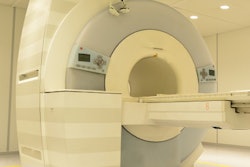
Although improving patients' imaging experience may seem daunting, there are four relatively simple ways to boost a department's performance ranking and support patient care, according to a study published online January 22 in Radiology.
The results are reassuring in an era when addressing the patient experience isn't just a good idea for imaging facilities -- it's also linked to physician reimbursement, wrote a team led by Dr. Neena Kapoor of Brigham and Women's Hospital in Boston.
"Studies demonstrate that a positive patient experience is associated with better health effectiveness, outcomes, adherence to treatment, and lower resource utilization," the group wrote. "Under [the Merit-Based Incentive Payment System (MIPS)], physicians are now additionally incentivized to improve patients' experience of care, because part of a physician's reimbursement may be tied to patient experience measured with surveys."
Kapoor and colleagues sought to assess the impact of a program to improve the patient experience on their department's national rankings on an outpatient radiology survey administered by Press Ganey Assoc. to more than 1,200 institutions. Press Ganey began surveying patients seen at Brigham and Women's, which implemented a quality improvement effort during the survey period.
Over the study time frame, the department's overall raw ranking score increased from 92.8 to 93.6 out of 100 (p < 0.001), and its national ranking improved from the 35th to the 50th percentile (p < 0.001). The percent of negative comments declined over the study period, from 15.4% in the first month to 14% in the final month (p < 0.001).
How did the department improve its score? It took four actions:
- Educated department staff. "We used several email communications and various in-person sessions to inform members of our department about the importance of improving patient experience," Kapoor and colleagues wrote.
- Distributed identification badges to all radiology staff. These badges displayed the staff member's role and pertinent survey questions on one side, and a checklist of what the staff person should do with each patient on the other side.
- Established a patient experience oversight committee that included radiology department physicians and administrators, as well as the hospital's patient experience leadership team. "The committee met monthly to review patient comments from high- and low-performing sites," the researchers wrote.
- Created a "heat map" to represent patient feedback and to track the department's raw ranking score and percentile rank. This graphic was accessible to radiology directors and departmental leadership via a web-based dashboard.
The study demonstrates that even small changes can have a big effect, according to Kapoor and colleagues.
"We found that a small improvement in raw patient experience scores led to a 15-point increase in percentile ranking on a national level," they wrote.
"Implementing a multifaceted quality improvement initiative focused on improving patient experience with radiology care and reducing negative comments may enhance patient experience of care and national percentile ranking in patient experience," the group concluded.




















